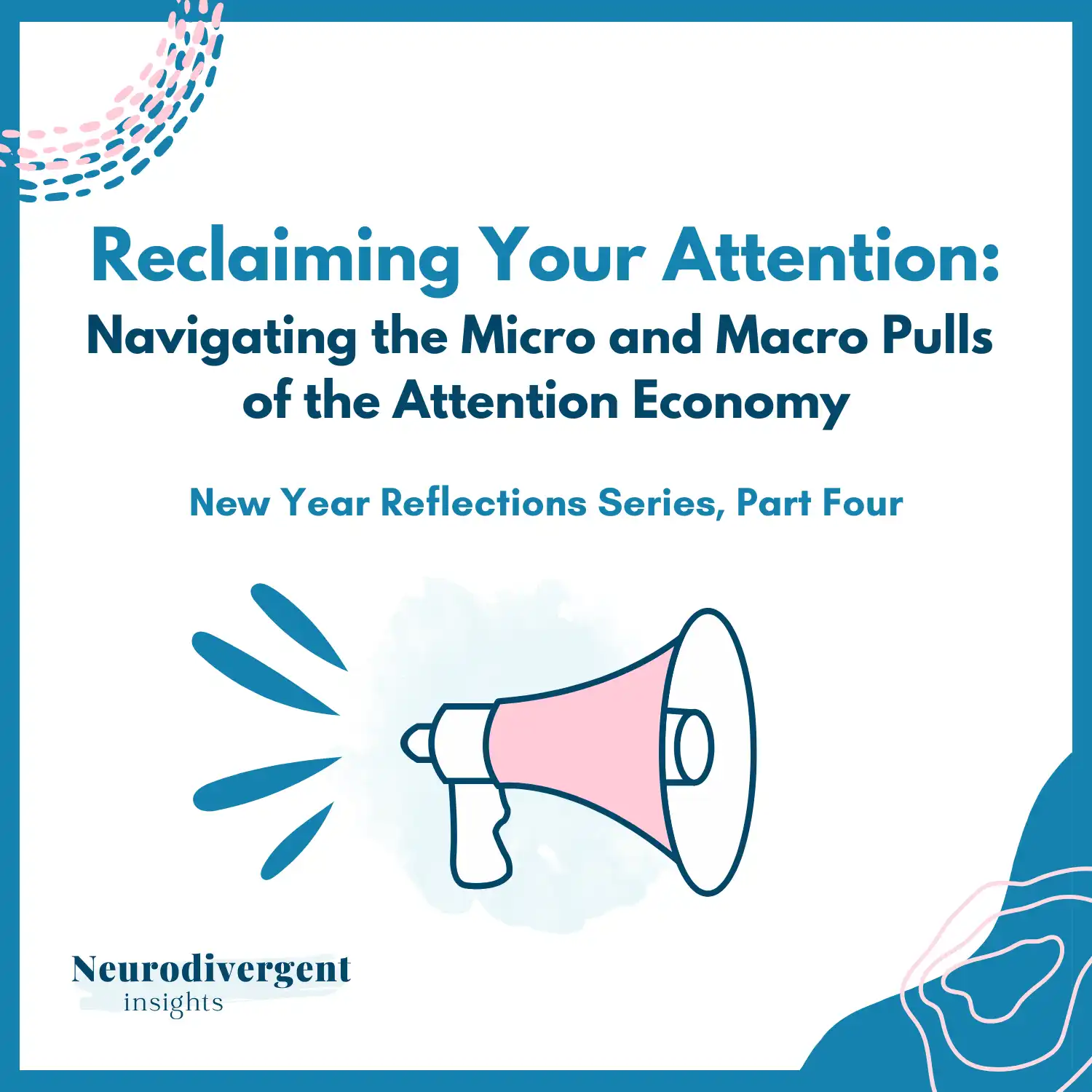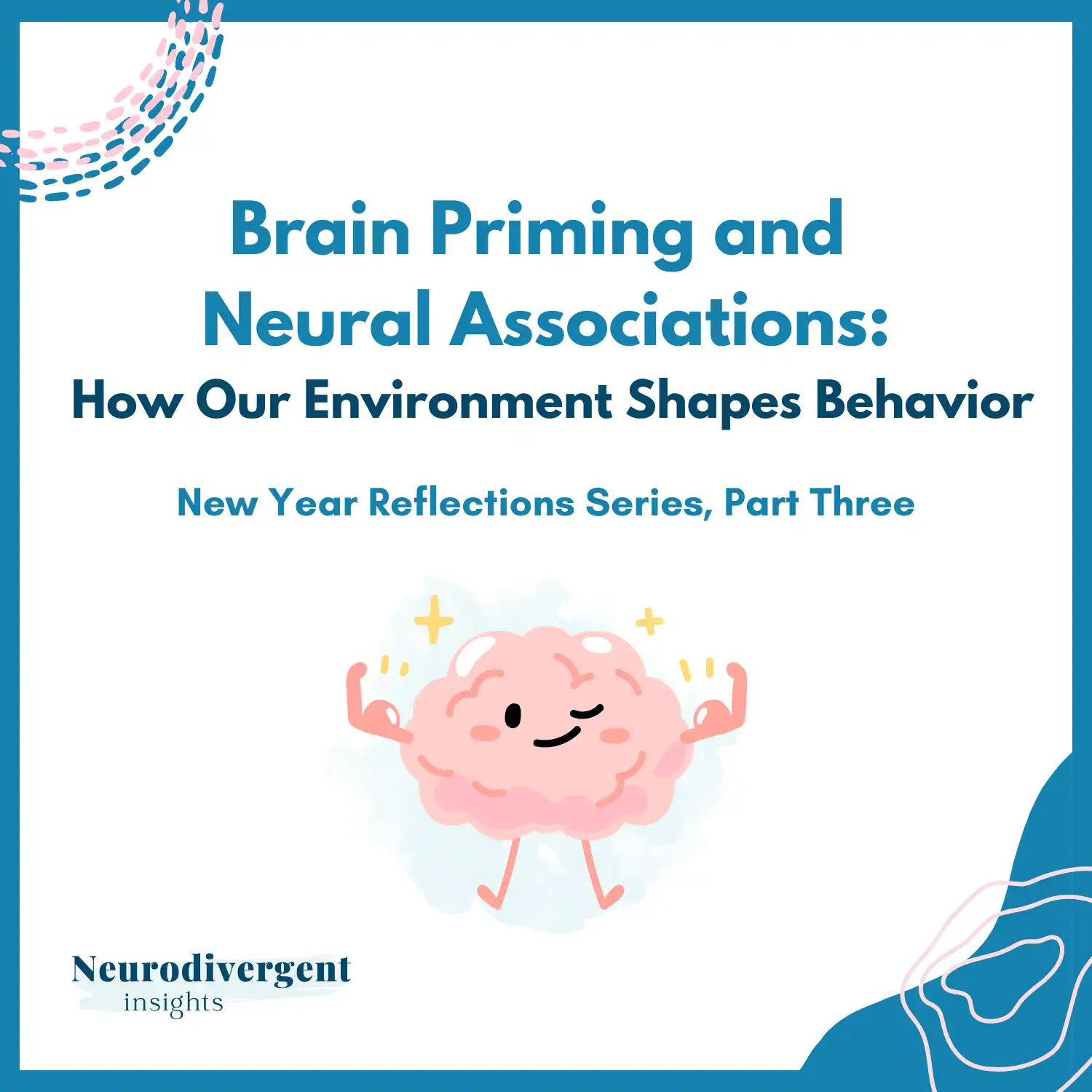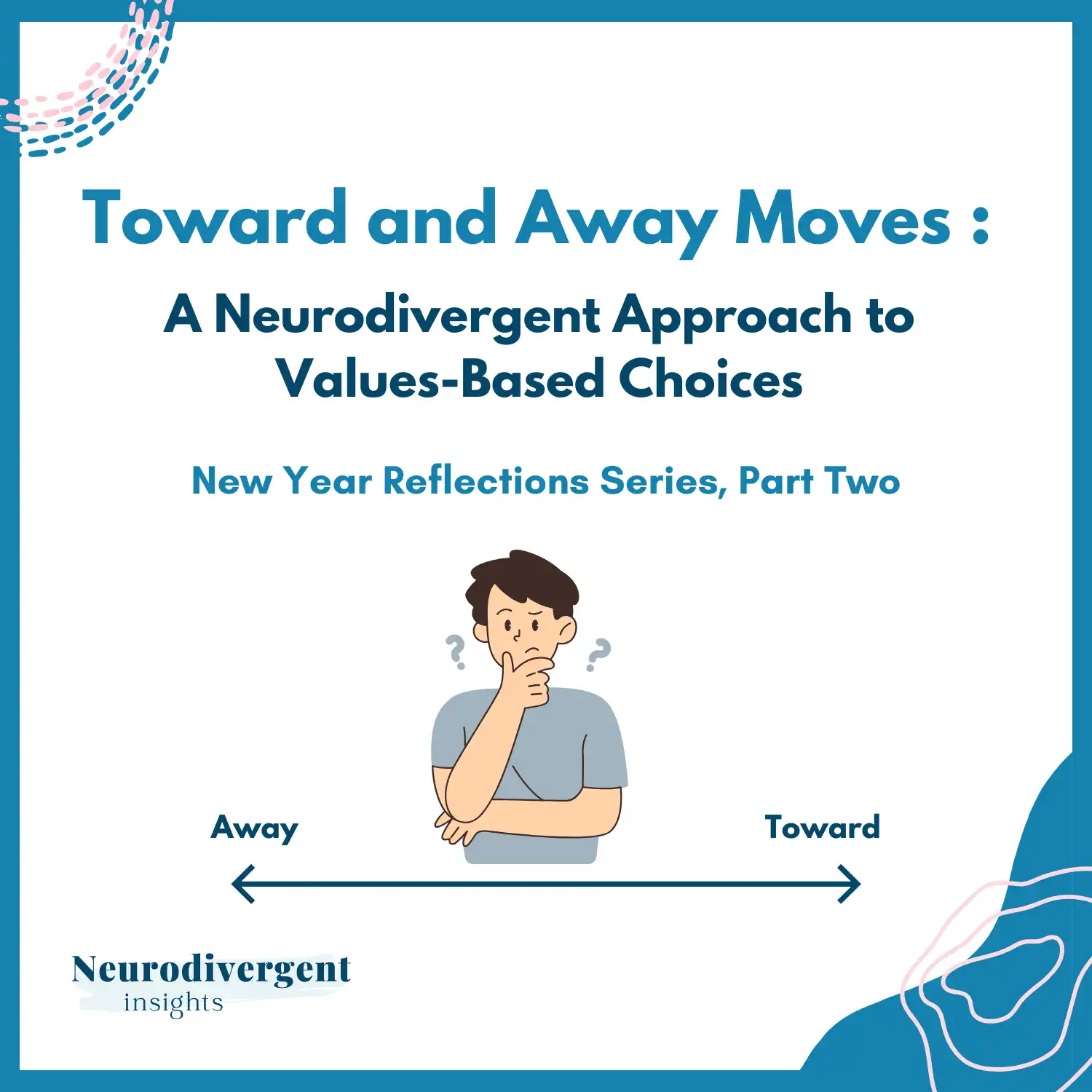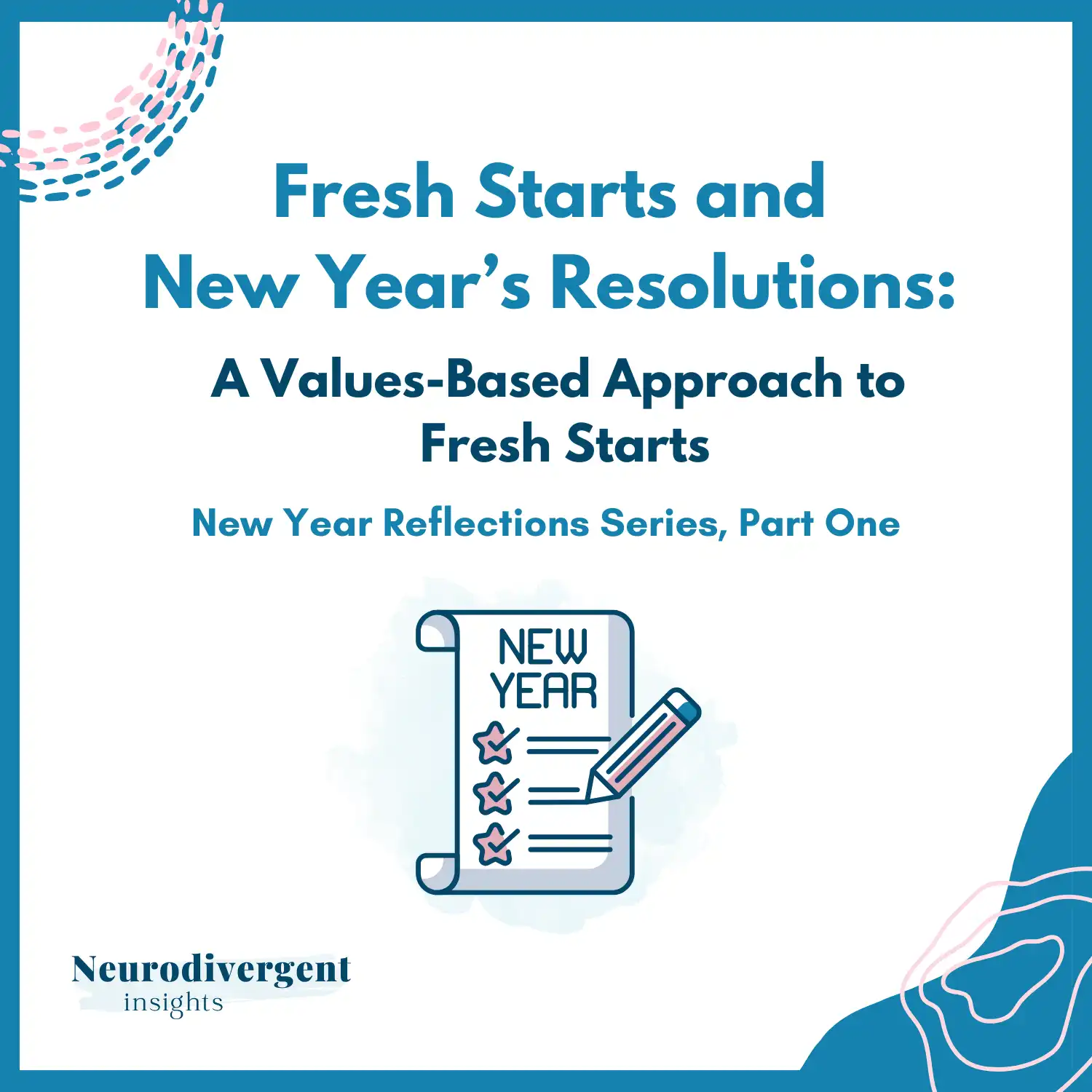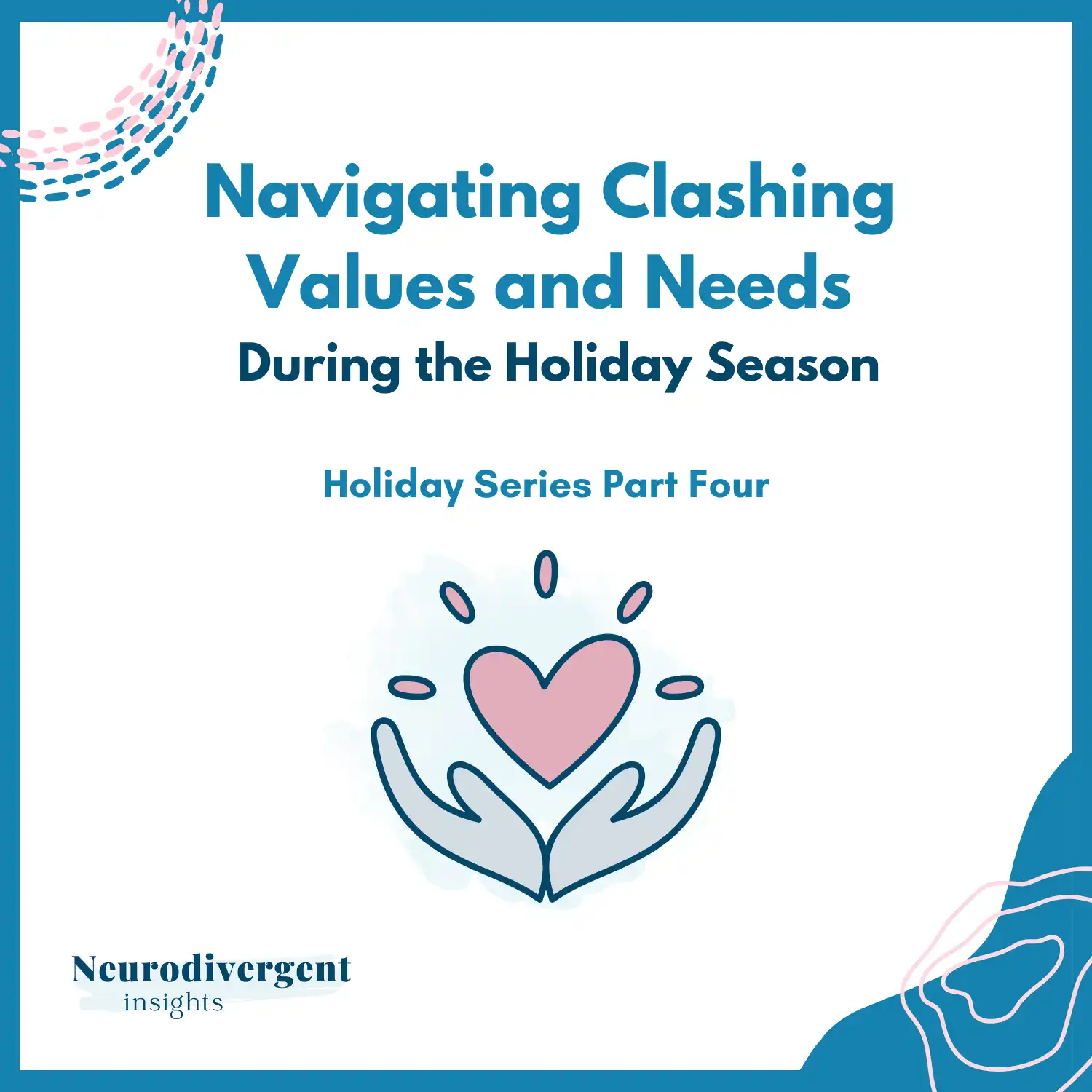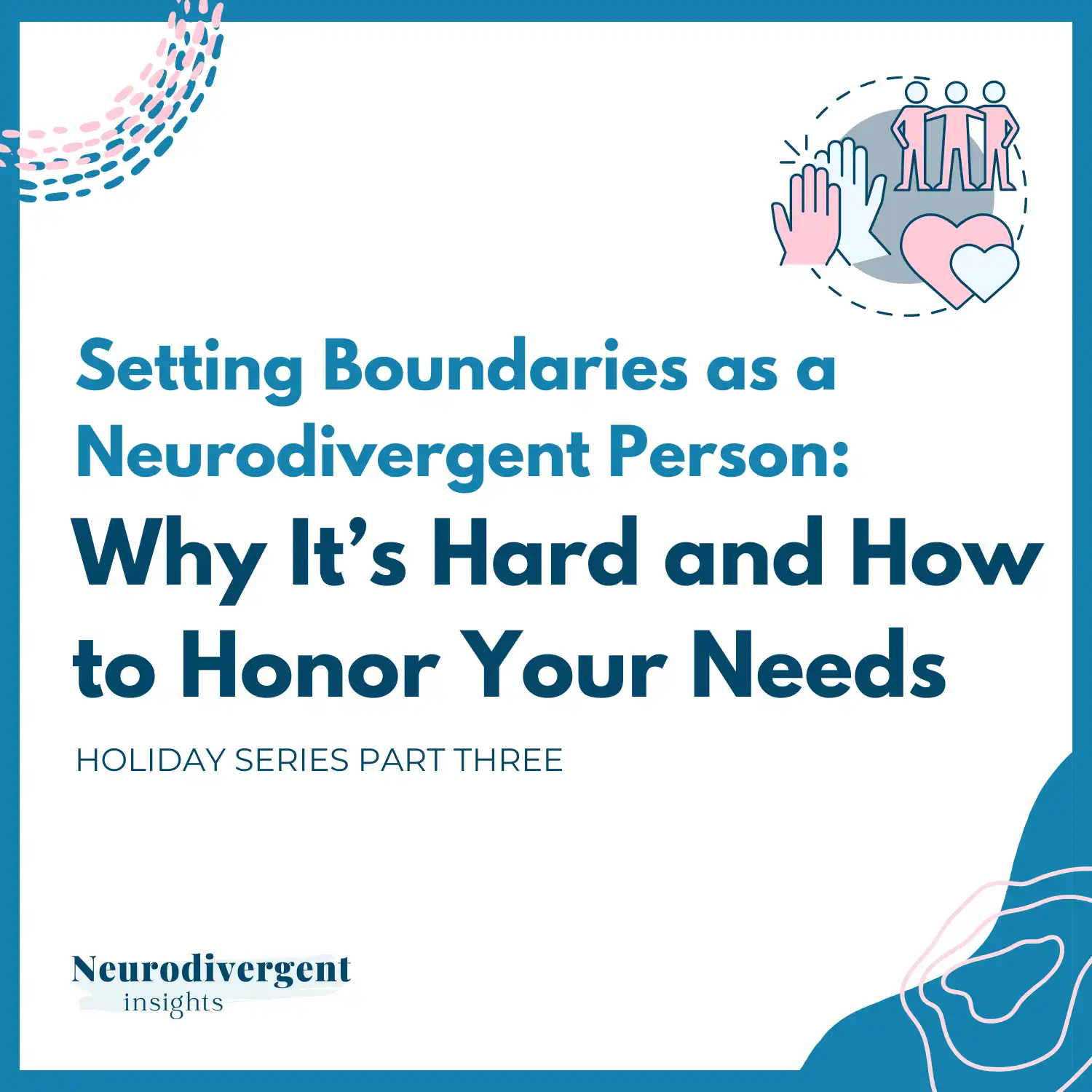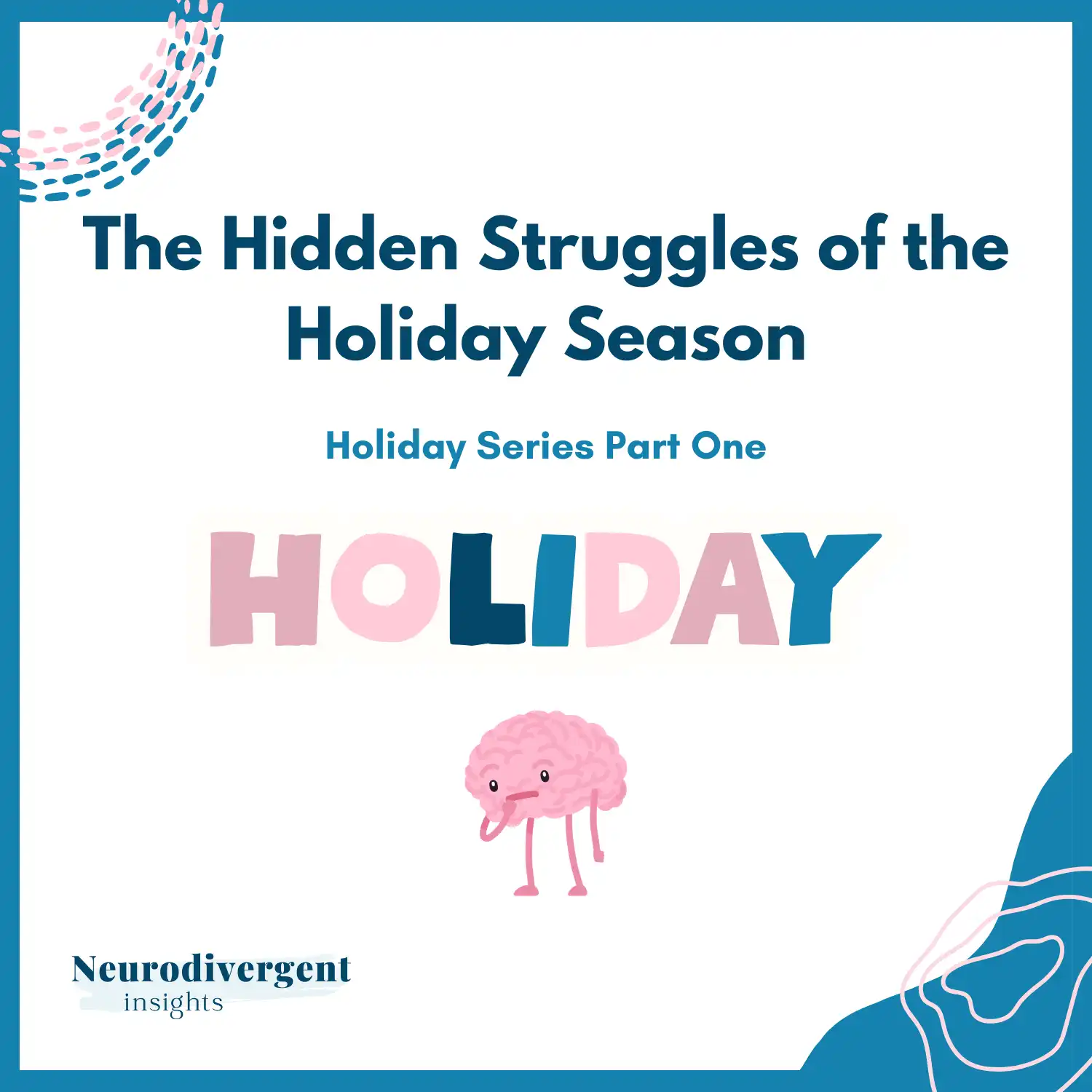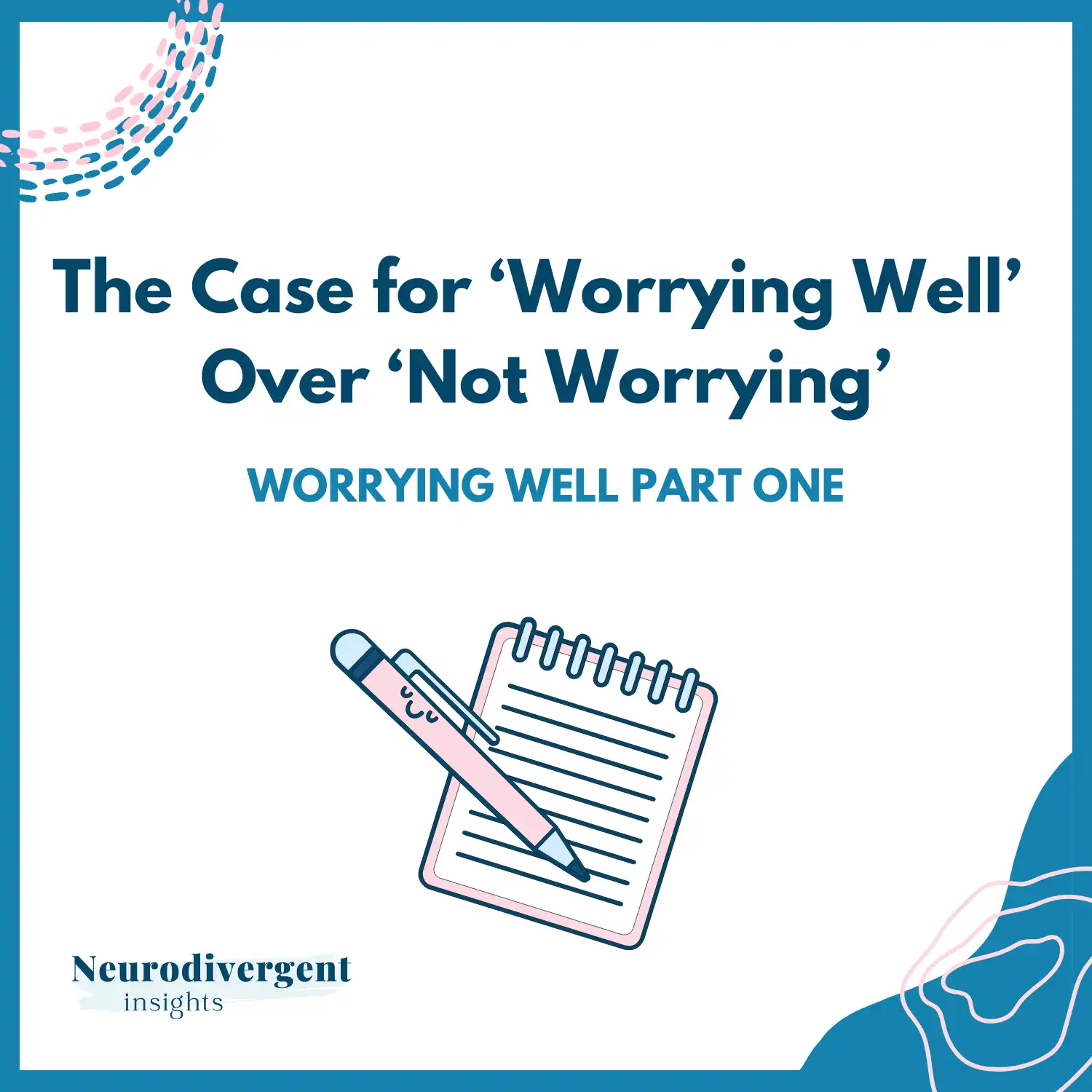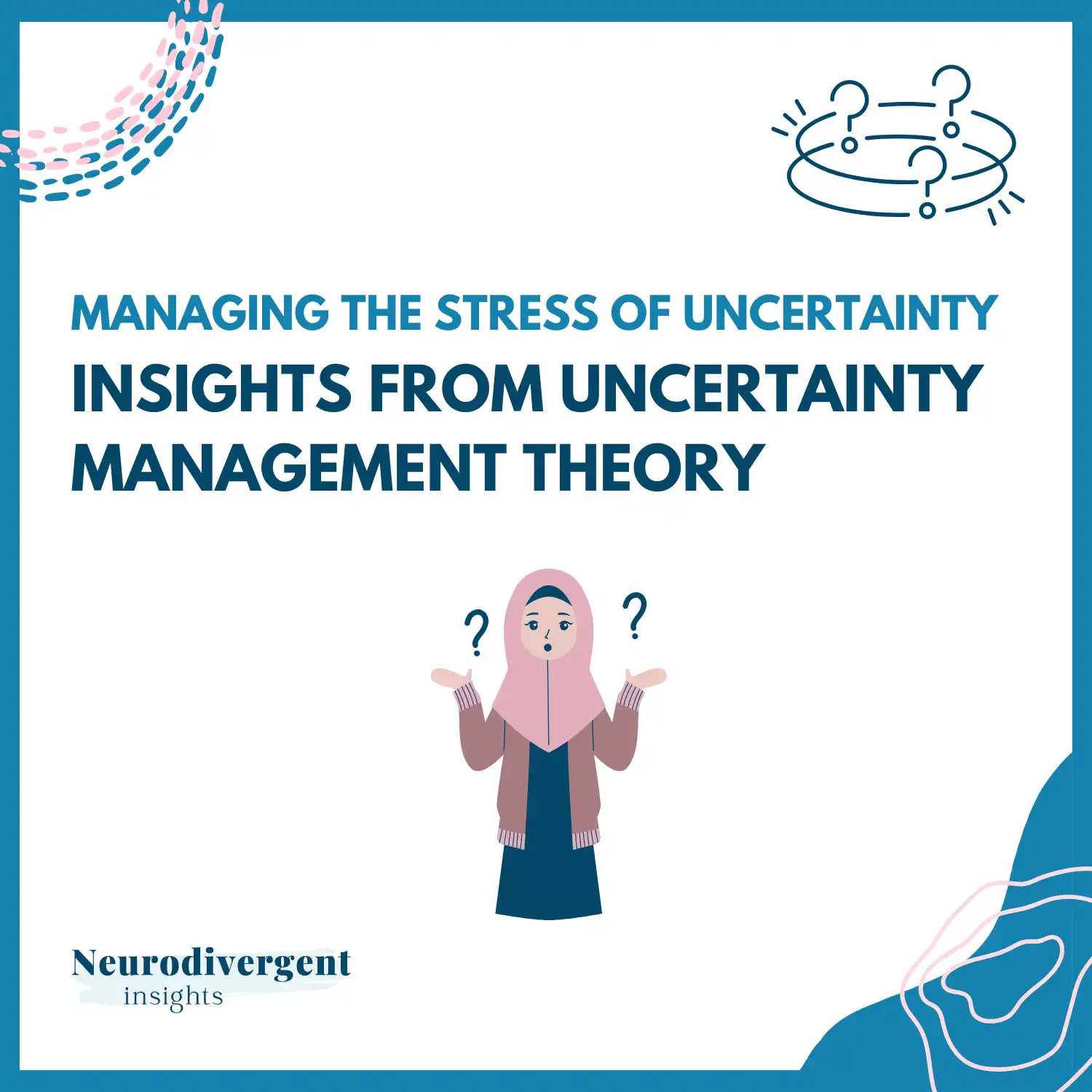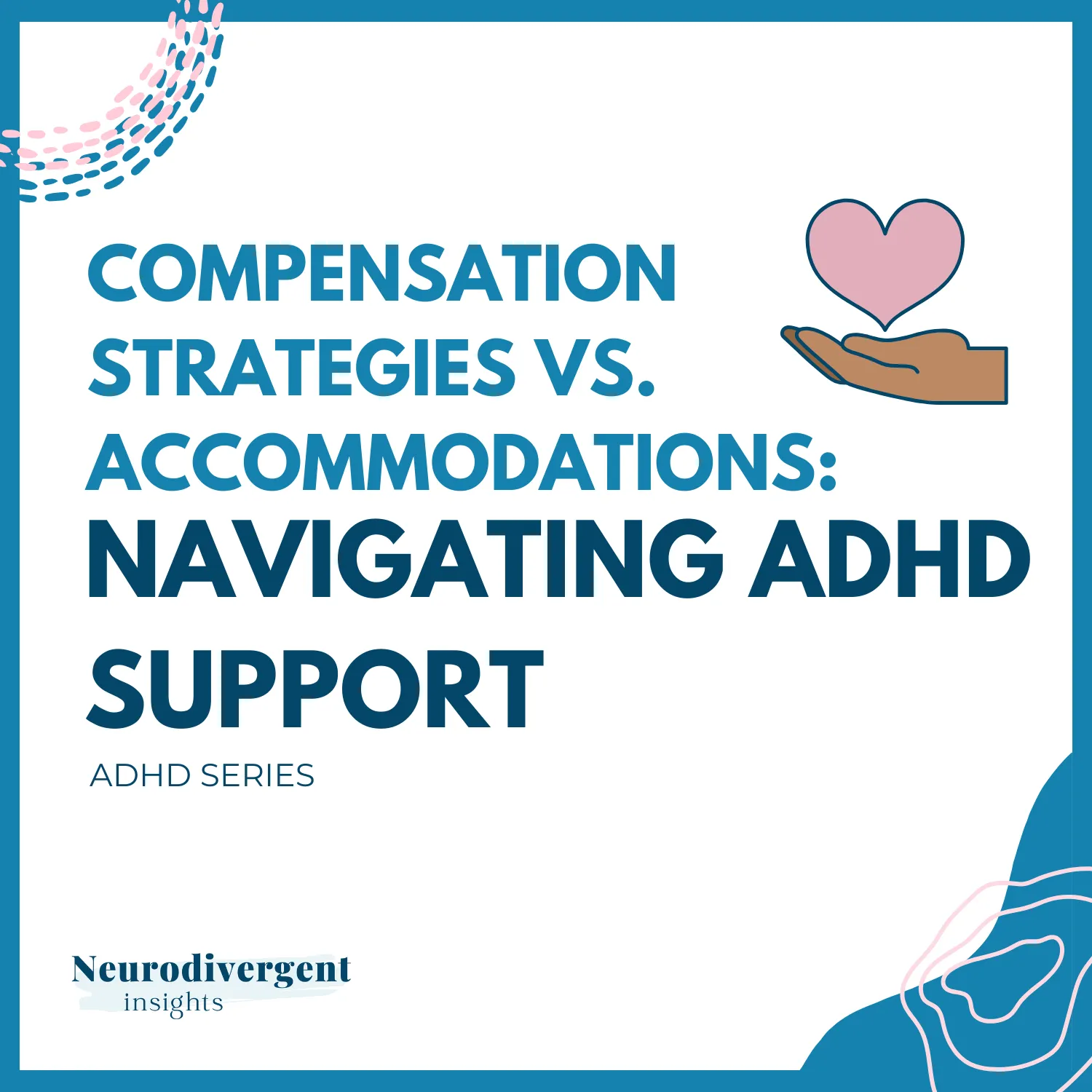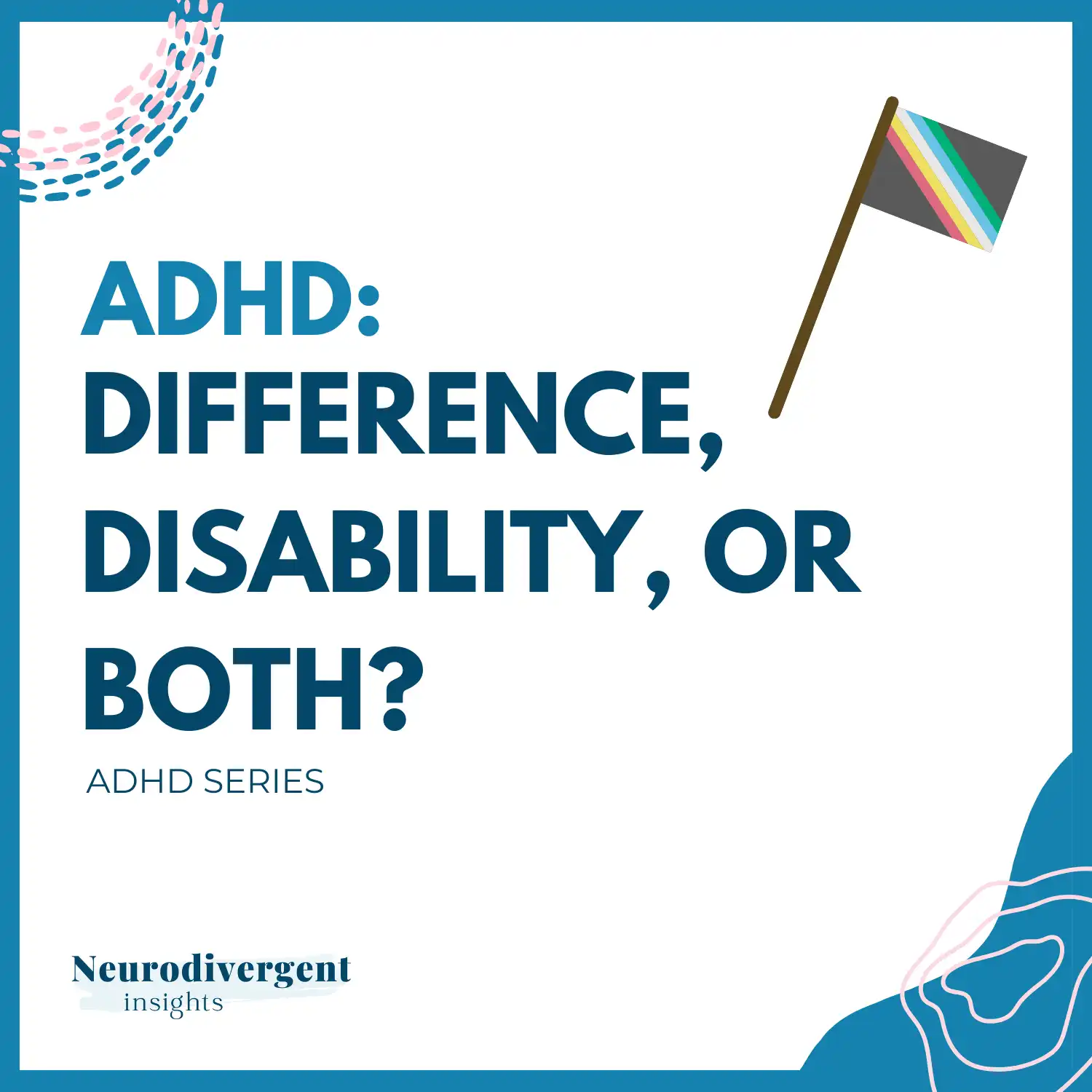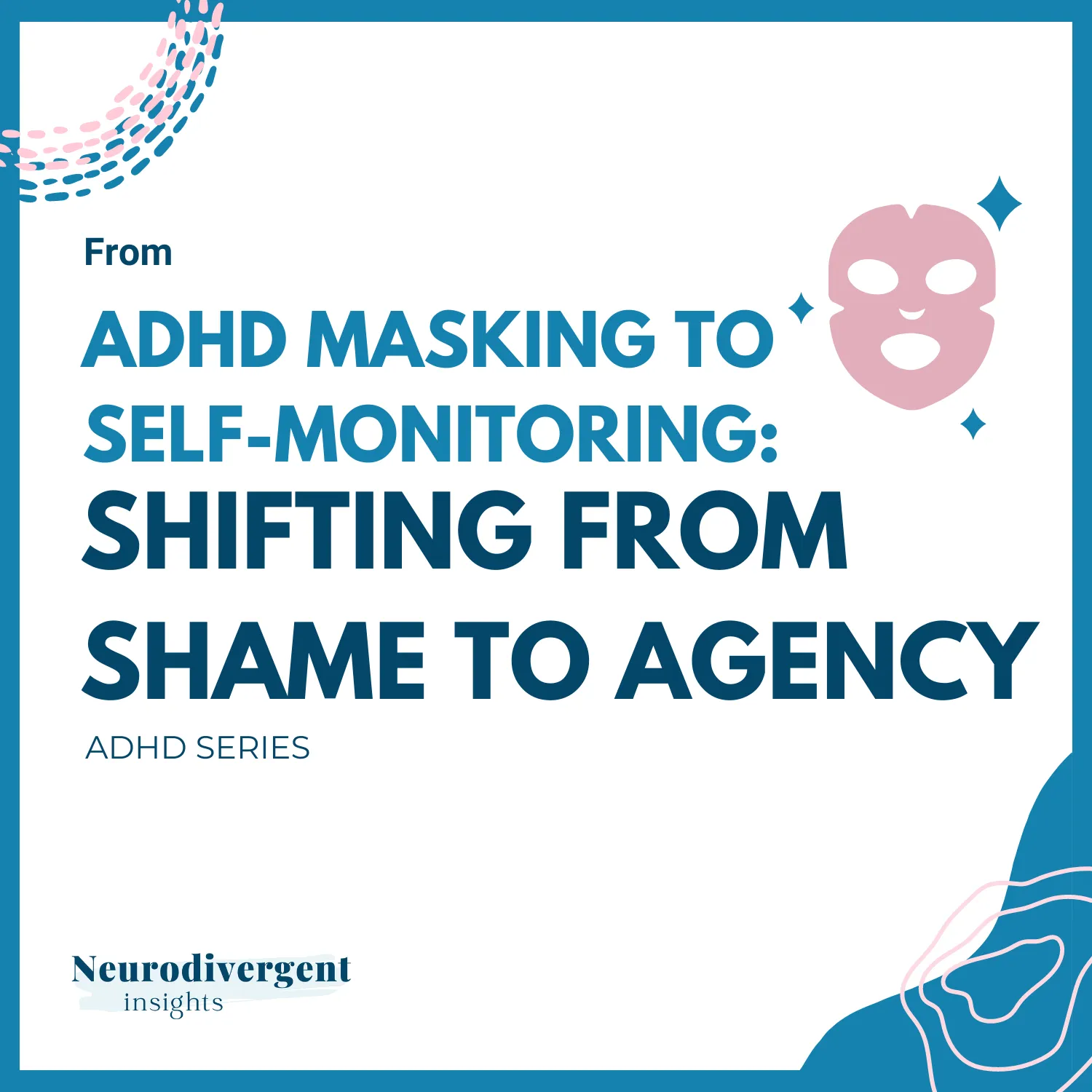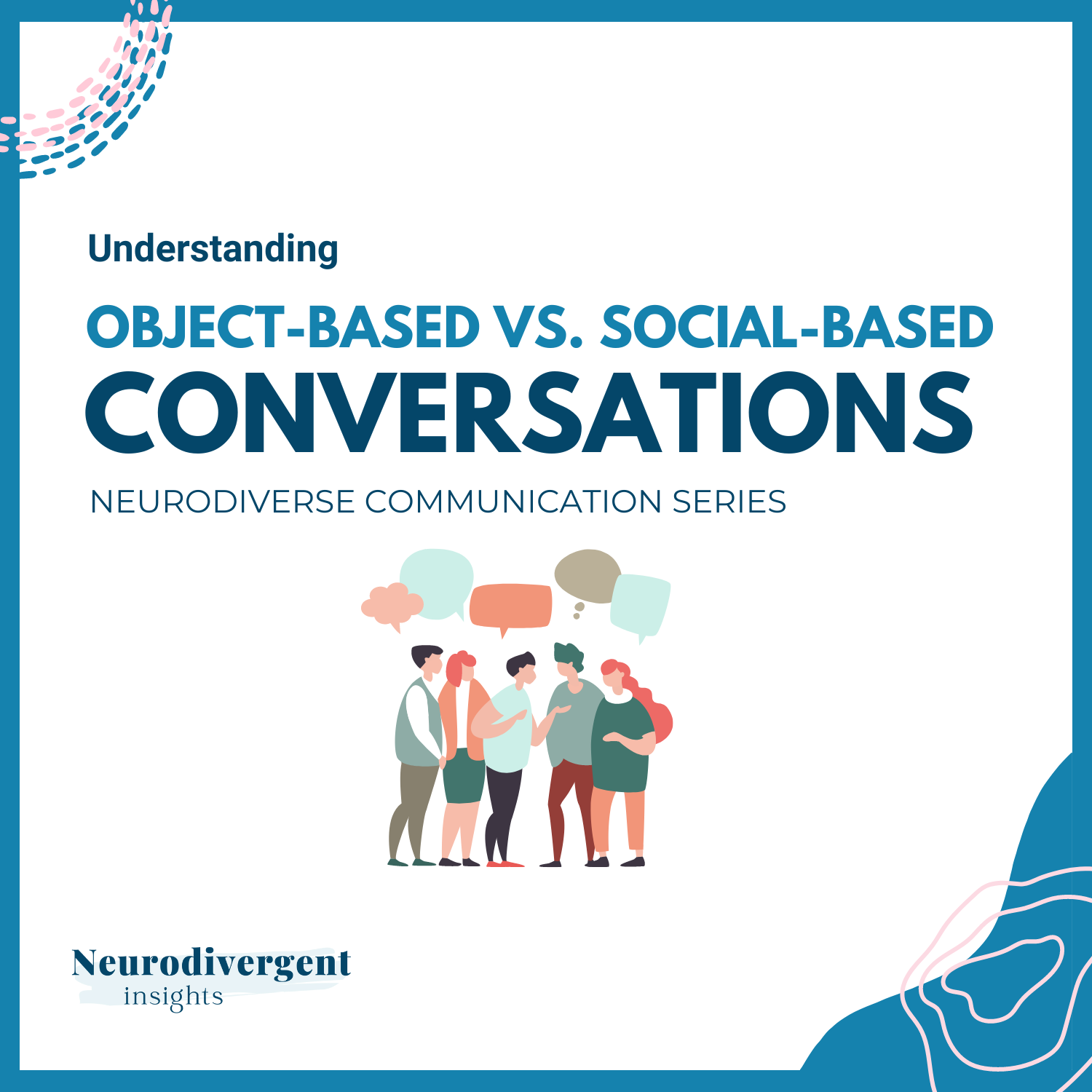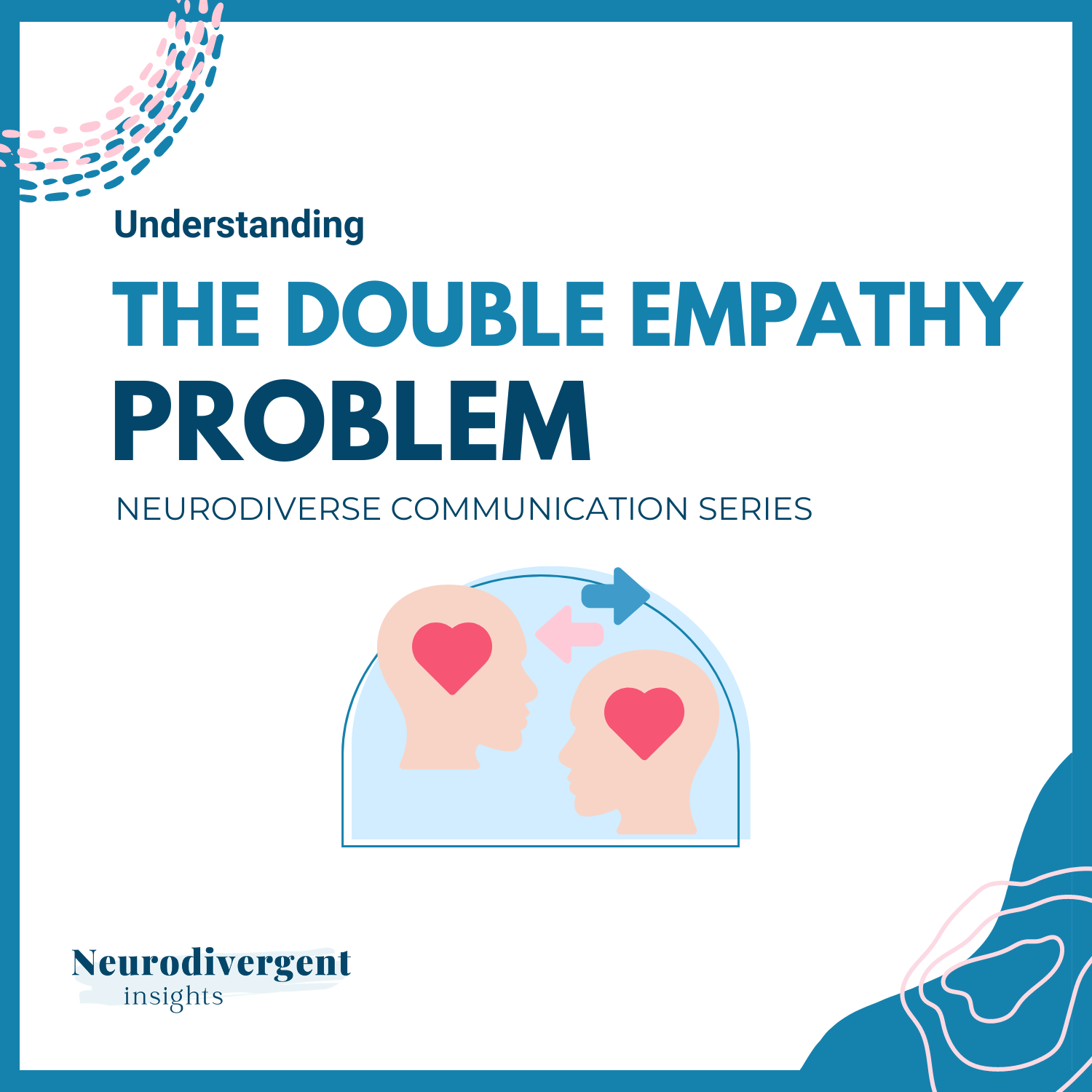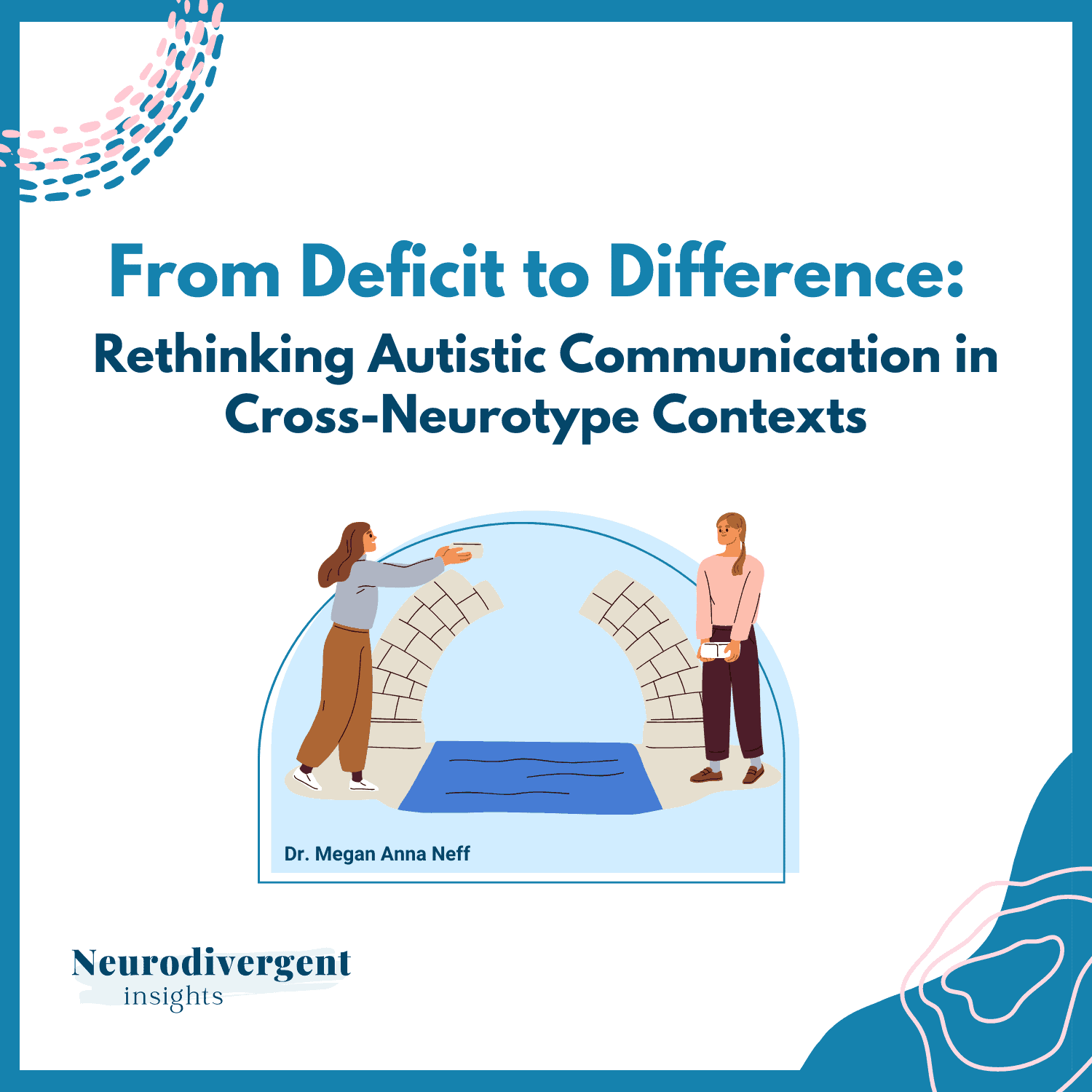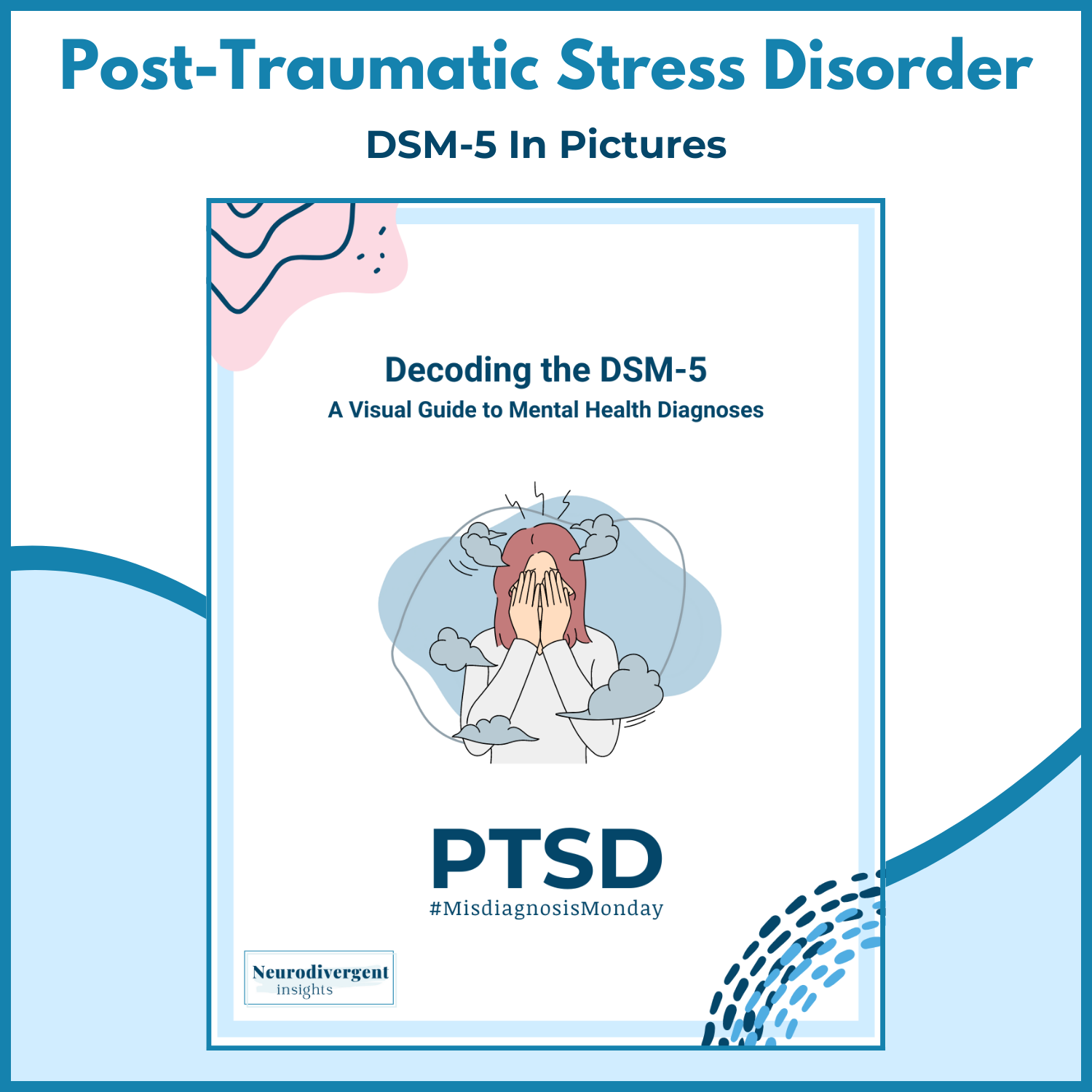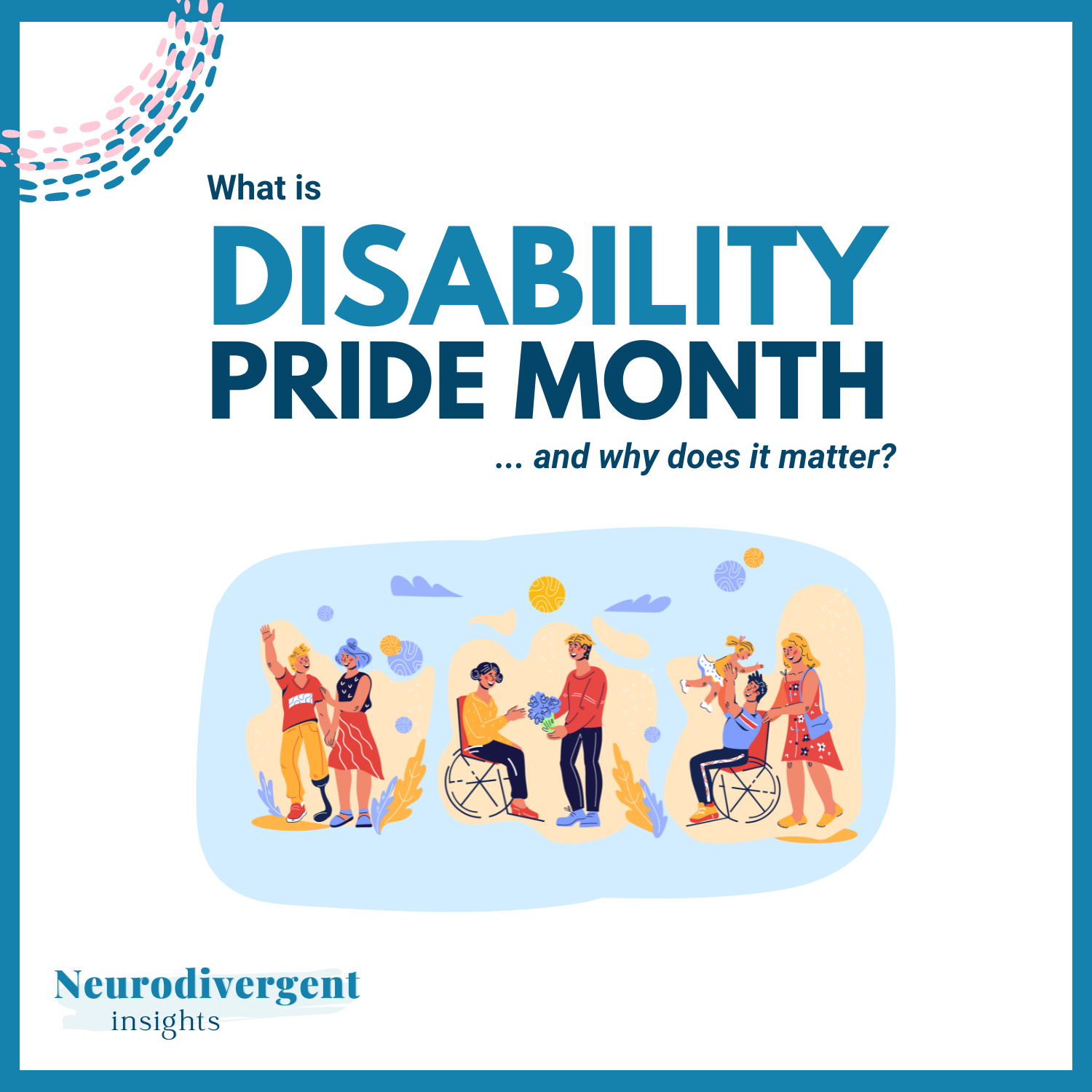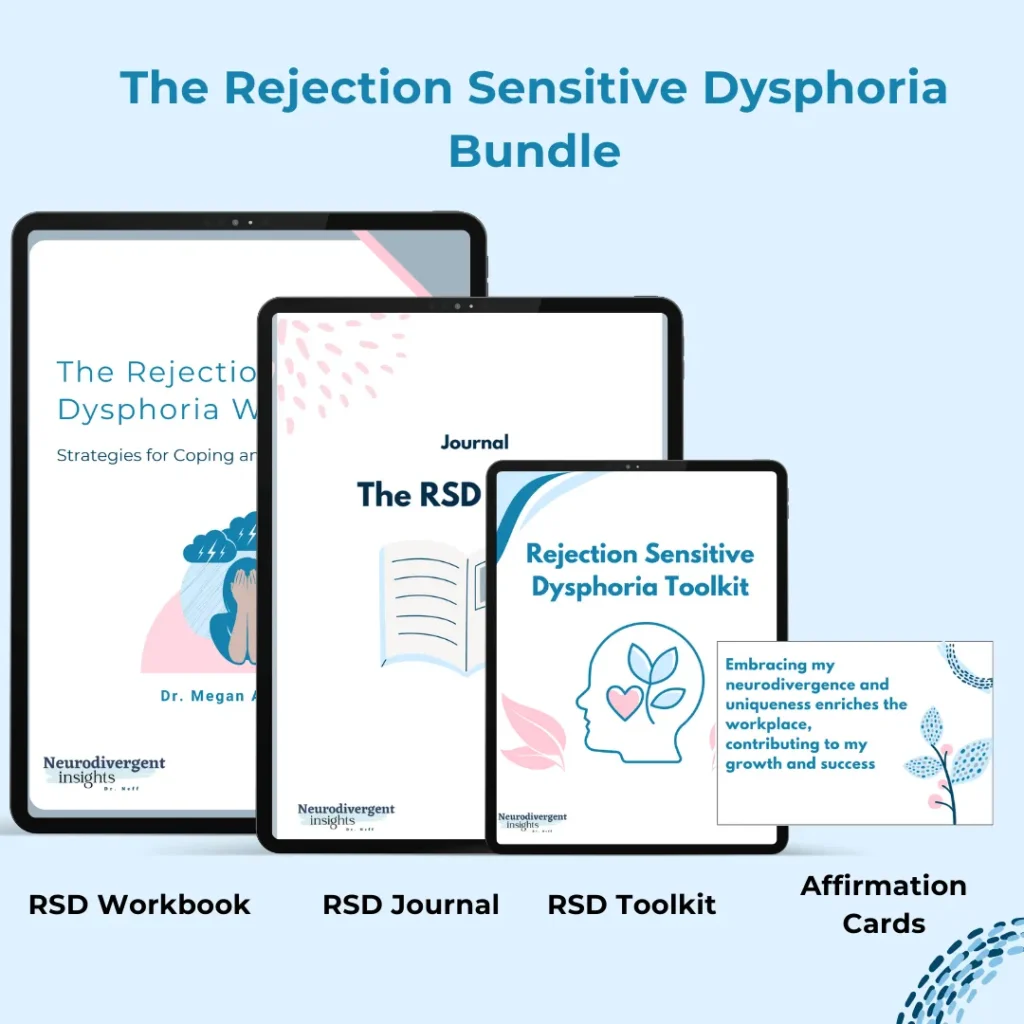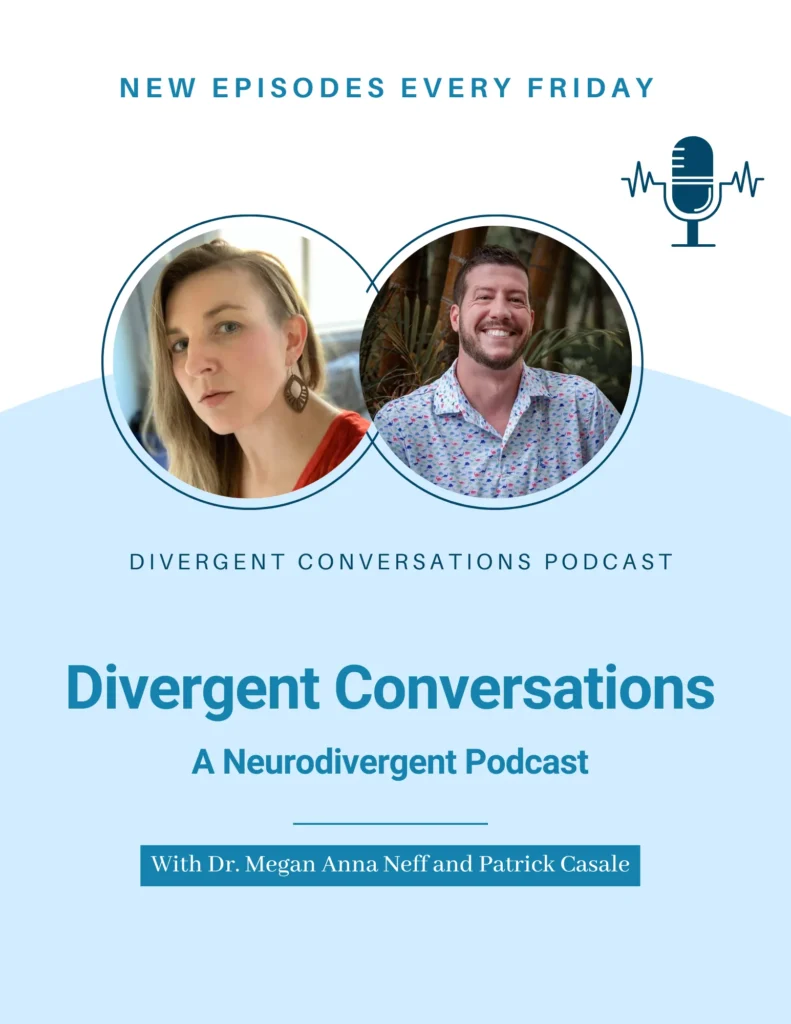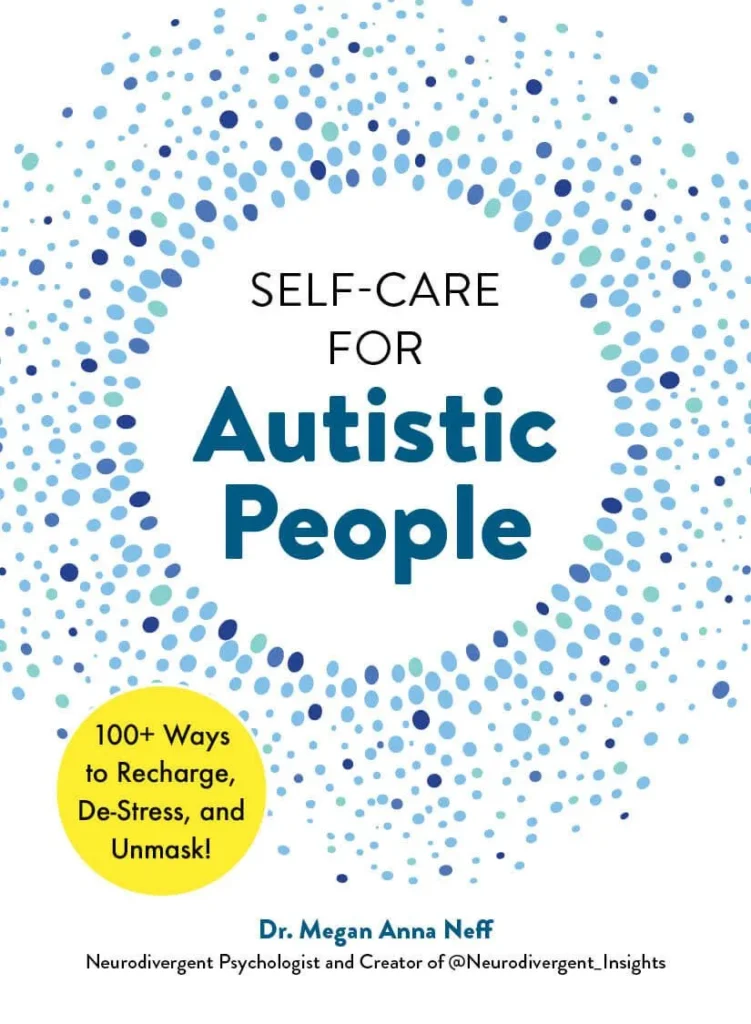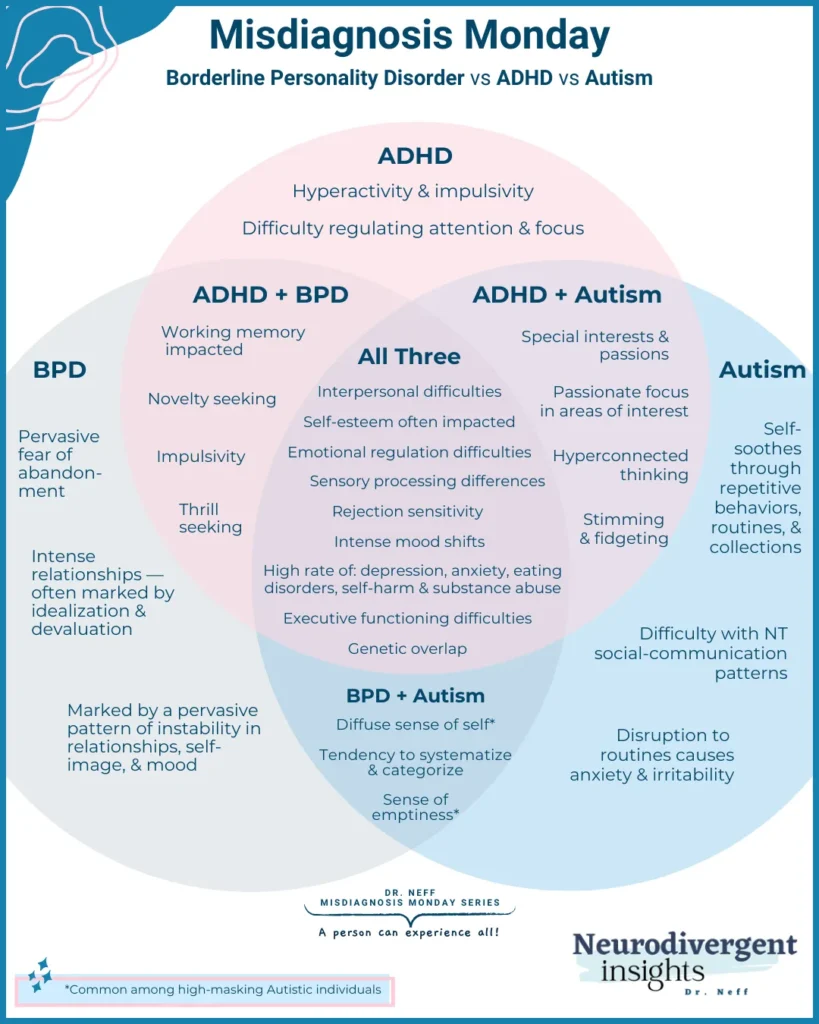
Borderline Personality Disorder, ADHD, and Autism
The trifecta of Borderline Personality Disorder, ADHD, and Autism paints an incredibly complex picture! It is complicated by two major factors:
1) These conditions co-occur at high rates
2) They share many overlapping traits and symptoms, which can lead to misdiagnoses
A person can have one of these conditions, two of these conditions, or all three! When one or two of these conditions are present, it is difficult to distinguish the difference.
Contents:
Co-Occurring Borderline Personality Disorder, ADHD, and Autism
Borderline Personality Disorder co-occurs with ADHD and Autism at higher rates (than seen in the non-ADHD & Autistic population). In fact, the prevalence rate of nearly all Personality Disorders is higher among people with ADHD and Autism. Our neurotype makes us more vulnerable to developing PTSD after acute trauma. It also makes us more vulnerable to developing Personality Disorders, including BPD, in the aftermath of traumatic childhoods.
The high prevalence of personality disorders makes sense for several reasons.
We have more vulnerable nervous systems, sensory systems & amygdala, so our bodies respond more intensely to trauma.
We experience more victimization, discrimination, & ableism.
People with ADHD and autism live with many vulnerabilities that predispose them to things like PTSD & Personality Disorders.
Misdiagnosis of Borderline Personality Disorder
Outside of co-occurrence, BPD is also a common misdiagnosis for Autistic & ADHD people (particularly women & genderqueer people). Several ADHD traits (impulsivity, hyperactivity, difficulty regulating emotions) can look like BPD. To the untrained eye, common experiences for the high-masking Autistic can look like BPD (a diffuse sense of self from masking, sensory overload can look like angry outbursts, & difficulty with emotions & relationships).
Before reviewing the overlap, let’s do a refresher on each of these conditions.
Borderline Personality Disorder Defined
Borderline Personality Disorder (BPD) is a personality disorder characterized by a pervasive pattern of instability. More specifically, Borderline Personality Disorder is characterized by instability in relationships, self-image, emotions, and behavior (impulsivity). It is caused by the combination of a vulnerable temperament/neurotype and a dismissing, invalidating environment. Borderline Personality Disorder has a prevalence rate of 5.9% and is diagnosed in females at higher rates.
Borderline Personality Disorder is characterized by:
Intense difficulties in interpersonal relationships
An unstable self-concept
Impulsivity, disinhibition, and risk-taking behaviors
Difficulty managing painful emotions
For a deep dive into borderline personality disorder, see my DSM in pictures post here.
Attention Deficit Hyperactivity Disorder (ADHD) Defined
Attention-deficit/hyperactivity disorder (ADHD) is classified as a neurodevelopment condition, meaning it is present in childhood and has a strong genetic component. There are three subtypes of ADHD that can be diagnosed. These include: ADHD-Inattentive type (ADHD-I), ADHD-Hyperactive/impulsive (ADHD-H), and ADHD-Combined type (ADHD-C).
ADHD-I is characterized by difficulties regulating attention
ADHD-H is characterized by impulsive and hyperactive behavior
ADHD-C is characterized by both inattention and hyperactivity/impulsivity
For a deep dive into the DSM criteria for ADHD, see my DSM in pictures post here.
Autism Spectrum Condition Defined
Autism, like ADHD, is classified as a neurodevelopmental condition. Autism is characterized by a distinct social-communication style that is often misunderstood by allistic people. Autistic people self-soothe through strict adherence to routine, structure, repetition, and categorization. We often orient our identity through our special interests and values. For a deep dive into the DSM-5 criteria for autism you can see my DSM in pictures post here.
Borderline Personality Disorder and ADHD
Prevalence of Borderline Personality Disorder among ADHDers
In a population sample, 33.7% of ADHDers had BPD (compared to a 5.2% in the general population) (Bernardi et al., 2012).
In a large-scale population study done in Sweden, ADHDers had 19.4 times higher odds of BPD than individuals not diagnosed with ADHD (Kuja-Halkola et al., 2018).
Jacob et al., 2007 found at least 14% of individuals diagnosed with ADHD in childhood later receive a diagnosis of BPD.
Between 18%-34% of adults with ADHD are estimated to have co-occurring BPD (Matthies et al., 2011; Rasmussen and Gillberg, 2000).
Prevalence of ADHD among People with Borderline Personality Disorder
In a meta-analysis Ditrich et al., 2021 found the prevalence of ADHD in BPD individuals to be 30%-60%
Fossati et al., 2002 found that 60% of patients with BPD had elevated WURS-25 scores suggestive of childhood ADHD.
Similarities Between Borderline Personality Disorder and ADHD
Borderlineline personality disorder and ADHD are hard to distinguish. They share many personality temperaments, traits, and struggles.
The key clinical symptom overlap includes impulsivity and emotional dysregulation. Beyond that, both conditions are also associated with interpersonal struggles and temperamental similarities (Weiner et al., 2019).
Impulsivity
For both groups, impulsivity can result in: financial strain, addiction, gambling, unsafe sex practices, eating disorders, and risky behavior (Littman, 2021).
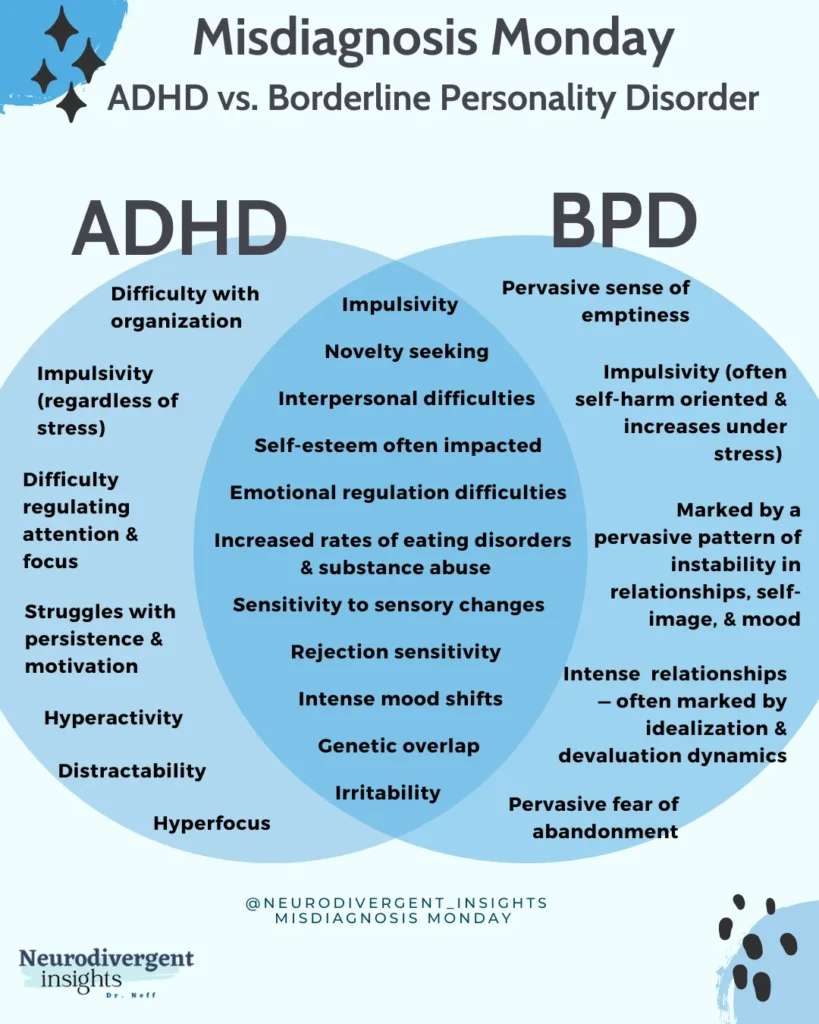
Emotional Regulation
People with BPD and ADHD both struggle with regulating emotions. This can result in people feeling isolated, unsupported, ashamed, depressed, panicked, and overwhelmed with a sense of despair (Littman, 2021).
ADHD and BPD share several personality traits, particularly novelty seeking and harm avoidance (Weiner et al., 2019).
Novelty Seeking
Novelty seeking (a strong interest in having new experiences) is high among both groups. van Dijk et al., 2012. The highest novelty-seeking scores were found among the ADHD+BPD group.
Harm Avoidance
Both groups also have a large level of harm avoidance (Weiner et al., 2019). Harm avoidance is characterized by excessive worrying, pessimism, shyness, fearfulness, doubt, and being easily fatigued. It is also associated with reduced serotonin (Chen et al., 2015).
Differences Between Borderline Personality Disorder and ADHD
To spot the difference between BPD and ADHD, it is important to get at the person’s internal experience. For example, both conditions experience executive functioning difficulties, emotional regulation difficulties, and impulsivity.
For ADHD, these experiences are part of the person’s baseline and will be present in multiple contexts. For BPD, these experiences are often triggered by attachment injuries and relationship stress.
Diagnostic criteria for these two conditions define and look at impulsivity differently. Impulsivity, in BPD, typically refers to impulsive self-harm. Whereas impulsivity in ADHD is typically in reference to interrupting others, having difficulty waiting for one’s turn, talking over people, and interrupting what other people are doing. (Ditrich et al., 2021). Note impulsive self-harm can occur in the context of ADHD as well; however, it is not included as part of the diagnostic criteria and is not always present.
Studies looking at impulsivity using neuropsychological assessments found some interesting differences (research findings summarized in Ditrich et al., 2021):
Impulsivity in people with BPD was more stress-dependent (meaning impulsivity becomes worse when under stress). Alternatively, ADHDers had more motor impulsivity (difficulty stopping an action that was already in motion).
Two studies found impaired inhibition to be a core feature of adult ADHD but not in adults with BPD. In the context of BPD, inhibition impairment has mainly been observed during stress. This suggests different pathways to inhibition and impulsivity difficulties. While ADHD is associated with difficulties with top-down executive functioning processes, BPD impulsivity has more to do with emotional dysregulation (Weiner et al., 2019).
To learn more about the similarities and differences between BPD and ADHD you can read my post on it here or check out the ebook.
Borderline Personality Disorder and Autism
Borderline personality disorder is a common misdiagnosis of high-masking Autistic people (particularly Autistic women and genderqueer people). They share many overlapping traits and experiences. Autistic masking can result in a diffuse sense of self and a sense of emptiness which can look like BPD. And emotions related to sensory overload can look like emotional regulation difficulties often seen in BPD.
Borderline personality disorder and autism also co-occur at high rates. Given how many high-masking autistic people remain undiagnosed, it is difficult to know the true prevalence rates of co-occurring BPD and autism.
Borderline Personality Disorder and Autism Similarities
Sensitivity to Abandonment
Rejection Sensitive Dysphoria is common among Autists individuals. Rejection sensitivity is an intense sensitivity to rejection or perceived rejection. People with RSD often go to great lengths to avoid situations that cause them to feel rejected. They also have strong reactions when they perceive themselves as being rejected. This can look similar to a BPD fear of abandonment and abandonment reaction.
A Diffuse Sense of Self
A diffuse sense of self. A core feature of BPD is a “diffuse sense of self” or lack of “self-identity,” often resulting from early childhood development/trauma. High-masking autists, who learn to socialize through copying/becoming chameleons, often lack a true social identity (Attwood, Vid.1).

Chronic Feelings of Emptiness
These feelings are commonly reported among high-masking autistics. This likely is related to diffuse identity due to social masking. Many autists also experience a sense of emptiness during burnout and when not actively engaged in a task (Attwood vid.2).
Emotional Dysregulation
Emotional dysregulation is a core feature of BPD. Autists also struggle with emotional dysregulation due to the autistic brain wiring/chemistry. Sensory overload and sensory meltdowns can also lead to emotional dysregulation.
Relationship Difficulty
Relationships can be challenging for both groups. This is due to differences in social cognition, social interactions, and maintaining long-term.
Sexual and Gender Diversity
Genderqueering is more common among Autistic people and people with BPD. People with BPD more commonly shift in their core sense of self, including sexual and gender identity (Biskin and Paris).
Autistic people are more likely than allistic people to be genderqueer.
People who don’t identify with the sex they were assigned at birth are 3-6 times more likely to be Autistic than cisgender people (Warrier et al.)
Autistics are more likely to be non-heterosexual than the general population (Sarris).
Emerging research demonstrates a higher percentage of gay and gender-diverse individuals represented within BPD populations (Reuter et al. and Singh).
Depersonalization and Derealization
Depersonalization involves the sensation that a person’s body/self is unreal or altered in a strange way.
Derealization involves the experience of the external world being bizarre, unreal, or dream-like.
Both can be a response to trauma; however, they can also be a response to sensory overload as the body shuts down to keep from taking in more sensory information. These experiences are common among both groups (Botbol).
Borderline Personality Disorder and Autism Differences
To tease out the difference between autism traits and BPD symptoms, it is important to understand the person’s internal experience. Here are a few places I narrow in on in order to tease out the differences.
Criteria B of Autism
While BPD and Autism share a lot of overlap, many aspects of criteria B for Autism are distinct from BPD. For example, the presence of special interests, strict adherence to routine, and self-soothing through repetition are distinct Autistic experiences.
Social Differences
While both groups experience social and relationship difficulties, the origin of the social difficulties differ. For BPD it is attachment-based and often resolves around difficulty with unstable relationships and idealization and devaluation dynamics. For Autism, it is related to difficulty with social initiation, small talk, and difficulty with allistic communication. Autistic people will do better when socializing with other Autistic people or connecting with people around areas of shared interest.
Attachment Style Differences
BPD is characterized by an insecure attachment style (typically anxious/preoccupied) (Agrawal et al.). While an insecure attachment style is also common among Autistic people, we are more likely to have an avoidant attachment style. One study found a higher rate of avoidant attachment styles among Autistic individuals. No association was found between anxious attachment and autistic traits (McKenzie and Dallos).
Personality Differences
One study comparing BPD and Autistic personality traits found Autists had higher inhibition but more compulsions (Strunz et al. 2014)
On the Factor-5 Personality Traits, people with BPD had:
Higher Extraversion
Higher Neuroticism,
Higher Openness
Lower Conscientiousness
*compared to Autistic people
To learn more about the similarities and differences between autism and borderline personality disorder you can check out my post on it here or check out the ebook.
ADHD and Autism
ADHD and Autism are both forms of innate neurodivergence (neurodevelopmental conditionals), meaning they are genetic and present in childhood. They overlap at high rates and share many similarities. The overlap between ADHD and Autism is poorly understood, partly because until the DSM-5 was released in 2013, a clinician couldn’t diagnose both ADHD and autism (Taurines et al., 2012).
Co-Occurrence of ADHD and Autism
Recent studies have shown a significant genetic and neurobiological overlap between ADHD and Autism Sokolova et al., 2017.
It is estimated that between 22-83% of Autistic children meet the criteria for ADHD (Sokolova et al., 2017).
Approximately 30-65% of ADHD children have significant Autistic traits Sokolova et al., 2017.
Twin studies and family studies consistently show substantial genetic overlap between the two conditions. There is approximately a 50-72 % overlap of contributing genetic factors Sokolova et al., 2017.
While co-occurrence is common, it is also common to see elevated ADHD traits within Autistics or elevated Autistic traits for the ADHDer. A person may not meet the criteria of both and yet still have significant trait overlap.
Genetic Overlap
There are various hypotheses regarding this common co-occurrence. Leitner et al., 2014 hypothesize that they share a common genetic etiology.
This hypothesis is supported by twin studies that suggest a substantial genetic overlap (approximately a 50-72% overlap). This theory suggests genetics explain why ADHD/Autism commonly co-occurs within individuals and families at such high rates (Leitner et al., 2014; Rommelse et al., 2010).
Furthermore, evidence points to a strong neurobiological overlap. Sokolova et al., 2017 suggest biological pathways involved in attentional control (inattention and task-switching difficulty) may be a key factor in understanding the genetic overlap between these conditions.
Similarities Between ADHD and Autism
ADHD and Autism, classified as Neurodevelopmental conditions, impact how the brain processes sensory input and cognitive processes. Both impact executive functioning, attention processes, and sensory processing. Following are some of the trait overlaps.
Executive Functioning Difficulties
Executive functioning challenges are core features of both ADHD and Autism. Challenges may include difficulty organizing tasks, object permeance, memory, focus, decision-making, and regulating attention. (Note: People with BPD also experience executive functioning challenges when emotionally overwhelmed, often triggered by attachment injuries).
Social Difficulties
Both groups often struggle with picking up social cues but often for different reasons. For the ADHDer, this may be related to inattention and impulsivity. For the Autistic, it is more often related to difficulties with intuitively picking up on social cues/body language/understanding pretense and difficulty with task switching (social communication involves considering multiple tasks at one time). (Note: people with borderline personality disorder also experience relationship differences often due to intense interpersonal relationships characterized by idealization and devaluation).
Interoception Issues
Interoception, the “8th sensory system,” refers to the ability to sense internal signals. For example, signals associated with elimination, hunger, thirst, and emotions are all examples of interoception. Interoception is integral to the ability to regulate emotions.
A person with poor interoception will have more difficulty registering and responding flexibly to their internal states and emotions. While results among ADHDers are more mixed*, there is research to suggest that both ADHDers and Autistics struggle with interoception at higher rates than the general public. For the ADHDer it is unclear if the signals are poor or if perhaps difficulty with attention regulation makes it difficult to focus and attend to interoception signals.
Time Perception
Partly associated with interoception, ADHD and Autistics often have an altered perception of time, sometimes referred to as “time-blindness” (Carmelo et al., 2020).
Sensory Sensitivities
Sensory sensitivities are common with both ADHD and Autism and are related to how the brain processes sensory input. (Note: Sensory processing disorder is also more common among people with borderline personality disorder).

Hyperactivity/Repetitive Movement (Stimming)
Stimming (repetitive movement) to regulate is common among both Autistic people and ADHDers. Further, ADHD fidgeting can look like stimming in the context of Autism.
Hyper-Fixation/Special Interests
Hyper-fixation and hyper-focus (particularly as they center around our passions and special interests, i.e., interest-based nervous system) are common among both ADHDers and Autistic people. Hyperfocus, as seen in the context of ADHD, can look a lot like hyper-fixation. ADHD passions can look a lot like Autistic special interests.
Emotional Regulation
Due to various factors such as brain circuitry (more sensitive amygdalas), interoception issues, more rigid nervous systems, and sensory processing, ADHDers and Autistics can struggle to regulate and soothing intense emotions. Difficulty regulating emotions can also be associated with sensory meltdowns and sensory overload.
Rejection Sensitivity Dysphoria
Rejection Sensitivity Dysphoria is common among both ADHDers and Autists. Note this can look similar to BPD’s fear of abandonment.
Differences Between Borderline Personality Disorder and ADHD
Differences Between ADHD and Autism
The following are a few of the places where I narrow in to tease out the differences between autism and ADHD.
Social Differences
While both groups experience social difficulties, they differ in nature. Here are some things to be considering:
What are the underlying mechanisms behind social difficulties? Sokolova et al., 2017 found that difficulty socializing was more connected to impulsivity and inattention in the context of ADHD. While for Autistics, the social challenges are connected to difficulty interpreting social cues. ADHDers will be able to read social cues when they can focus. Autists have more inherent difficulty with doing this intuitively.
Other social differences may include: ADHDers are more likely to talk excessively, interrupt others and not listen to what is being said, while Autistics are more likely to struggle with back-and-forth conversation and use language repetitively or robotically (Sokolova et al., 2017).
Disruptions to Routine
Many of the items in Criteria B for Autism can look like ADHD (sensory sensitivities, special interests can look like hyper-fixation, and repetitive movement can look like hyperactivity. One of the things that distinguish Autism from ADHD is how the person adapts to change (criteria B item 2).
However, to understand the Autistic experience, it’s important to consider the experience of self-initiated change (the person decided to change their routine) vs. change that comes from an external source (a forced or unexpected change).
For the autistic, unexpected change that comes from outside of us can cause intense irritability, anxiety, and stress. The ADHD brain often seeks dopamine, excitement, and change. The Autistic brain craves similarity, routine, and repetition. Understanding this aspect of a person’s experience will be key.
To learn more about the similarities and differences between autism and ADHD you can read my post on it here, or check out the ebook.
Summary
ADHD and Autism predispose people to personality disorders, including borderline personality disorder. Borderline personality disorder is also a common misdiagnosis for Autistic and ADHD people. I suspect that it is a particularly common misdiagnosis for Au-ADHDers (Autistic-ADHDers). All three conditions share genetic, temperamental, and trait overlap. They also share many psycho-social risks, such as victimization, substance abuse, disordered eating, mood disorders, PTSD, self-harm, and more. Even among seasoned clinicians who know these conditions well, it can be incredibly difficult to differentiate and spot the differences.
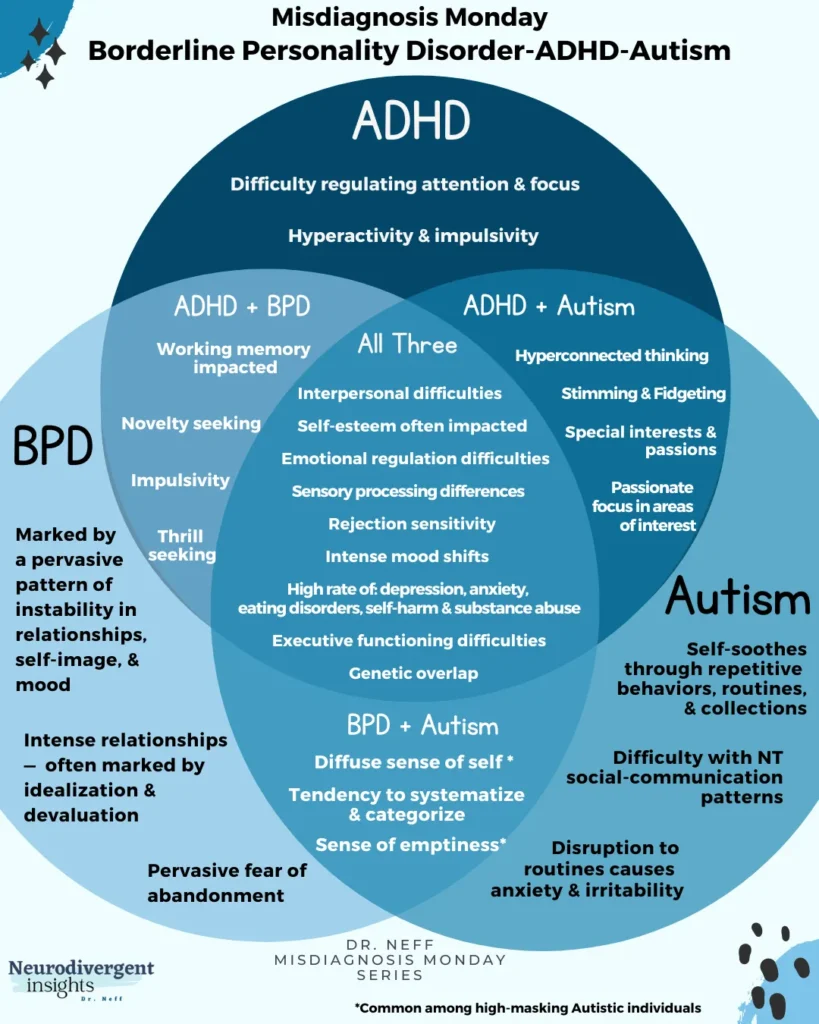
References
McDuffie, A. S., Lieberman, R. G., & Yoder, P. J. (2012). Object interest in autism spectrum disorder: a treatment comparison. Autism : the international journal of research and practice, 16(4), 398–405. https://doi.org/10.1177/1362361309360983
Monteiro, M. (n.d.). How the MIGDAS-2 helps develop a comprehensive framework for autism evaluations [Video]. WPS Western Psychological Services. YouTube.https://www.youtube.com/channel/UCURL




